Lesson 15: Bicycle Lanes
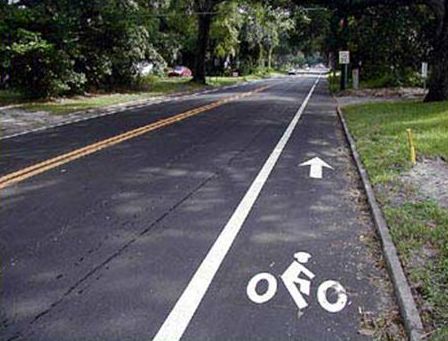
Lesson Outline
- Width standards.
- Retrofitting lanes on existing streets.
- Design at intersections and interchanges.
- Pavement marking and signing.
- Other design considerations.
- Practices to avoid.
Width Standards
- No curb and gutter: 1.2 meters (m) (4 feet (ft)) min.
| – If parking, then 1.5 m (5 ft) min. |
- With curb and gutter: 1.5 m (5 ft) min.
| – 0.9 m (3 ft) min. ridable surface, not including gutter pan. |
- Parking permitted but not striped:
| – 3.3 m (11 ft) total with no curb. |
| – 3.5 m (12 ft) total with curb. |
Retrofitting Bike Lanes
- Reduce travel lane widths.
- Reduce number of travel lanes.
- Remove, narrow, or reconfigure parking.
- Other design options.
| 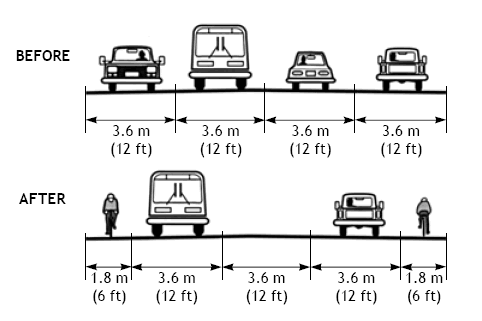
|
Road Diet
Bike Lanes at Intersections
- Encourage crossing/merging in advance of intersection.
- Use of broken lane stripe at bus stops and intersections.
- Many possible configurations.
- Avoid dual right–turn lanes if possible.
| 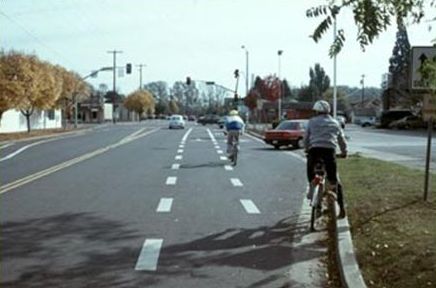
|
Bike Lanes at Interchanges
- Cross high–speed ramps in areas of good visibility.
- Cross ramps at right angle.
- Consider grade separation.
| 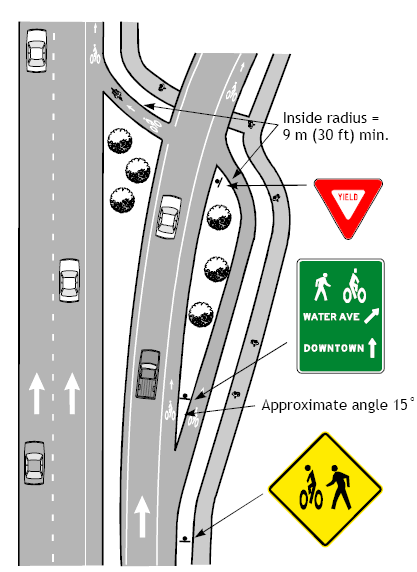
|
Pavement Markings
- Edgeline lane markings.
- Bike lane symbols.
- Traffic signal detector placement.
- Obstructions.
|
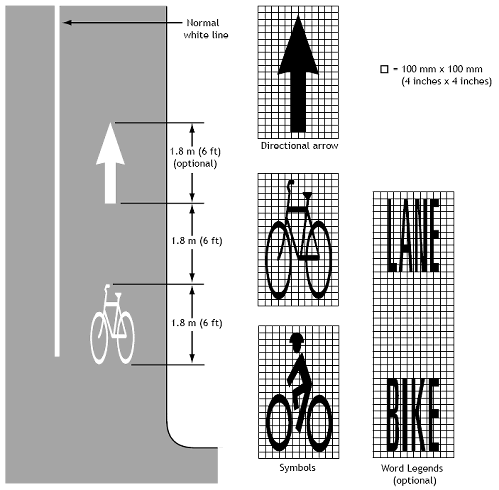 |
Signing
- Use of MUTCD.
- Consistency in shape, legend, color.
- Regulatory signs.
- Warning signs.
- Route guide signs.
| 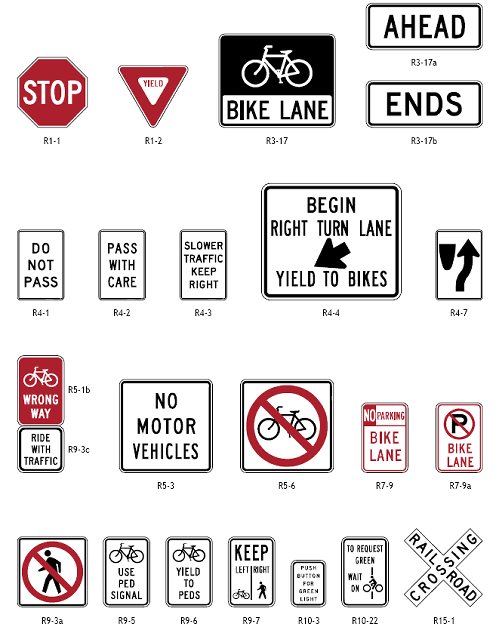
|
Colored Bike Lanes
- Common in Europe.
- Delineate the preferred paths through complex intersections or across high–speed ramps.
- Tested in Portland, OR, with mixed results.
| 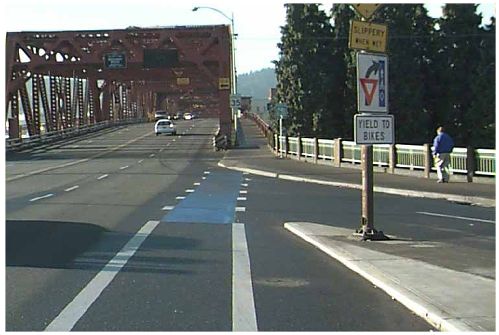
|
Contraflow Bike Lanes
- Prevent circuitous travel on one–way streets.
- High bike demand.
- Warning signs at intersecting alleys and streets.
| 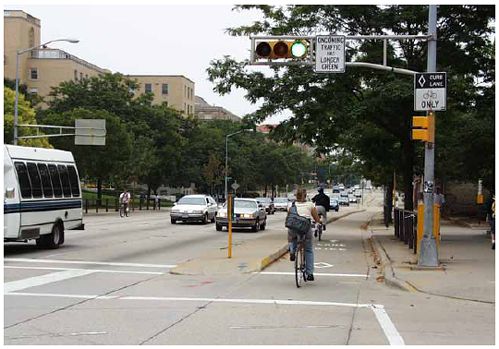
|
| (This picture shows a bicyclist not wearing a helmet. FHWA strongly recommends that all bicyclists wear helmets.) |
Practices to Avoid
- Two–way bike lanes.
- Continuous right–turn lanes.
| 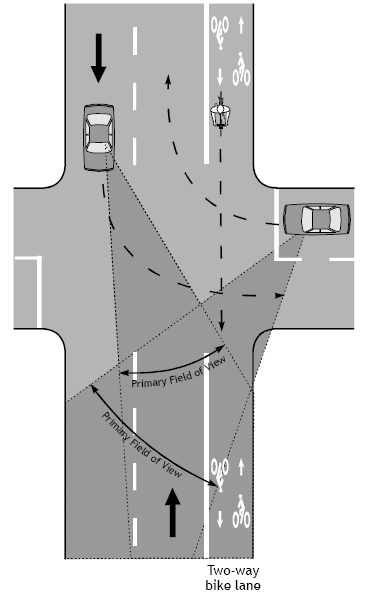
|
Lesson Summary
- There are many ways to design for bicycle lanes on vehicular roadways.
- Use of specific design elements create safe and efficient bicycle lanes.
FHWA-HRT-05-114
|
